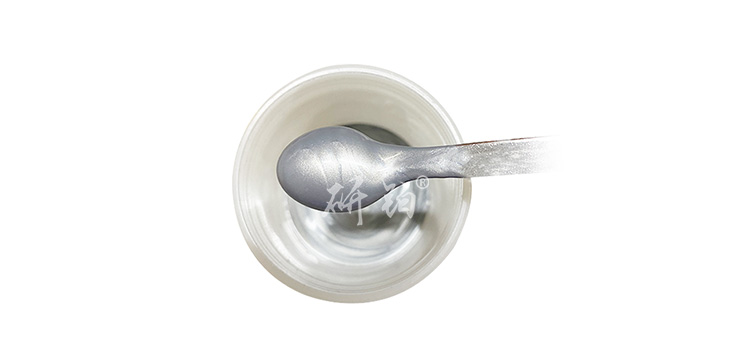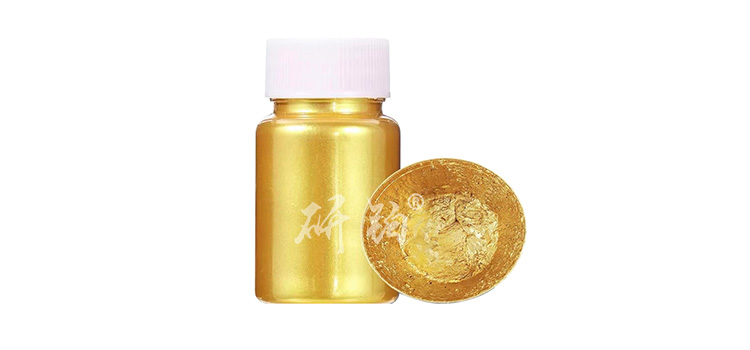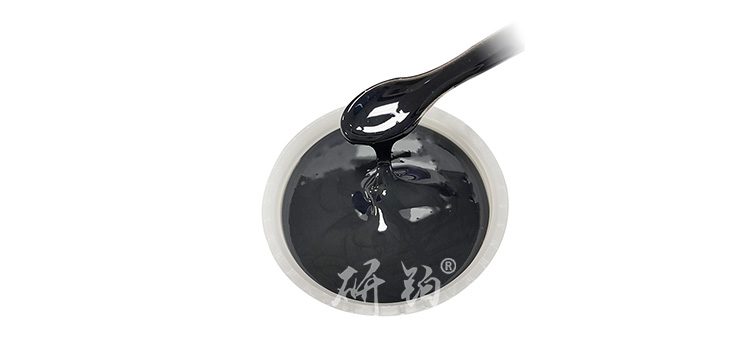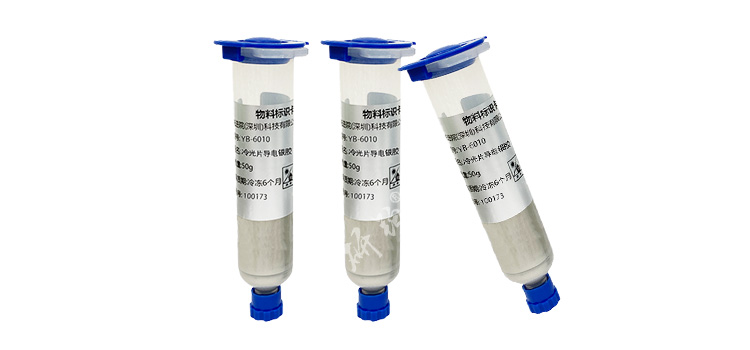

Hotline:0755-22277778
Tel:0755-22277778
Mobile:13826586185(Mr.Duan)
Fax:0755-22277776
E-mail:duanlian@xianjinyuan.cn
Introduction: Adhesive bonding is a method of firmly connecting the same or different materials together through substances with adhesive properties. Substances with adhesive ability are called adhesives or bonding agents, objects that are bonded are called adherends, and components composed of adhesive and adherends are called bonded joints. Its main advantages are simple operation and high productivity; The process is flexible, fast, and simple; The joint is reliable, firm, and aesthetically pleasing. The product structure and processing technology are simple; Material saving, labor-saving, low cost, and minimal deformation. Easy to implement the technology of repairing and recycling waste can be effectively applied to the connection between different types of metals or non metals.
The curing methods of glue generally include the following: 1. Room temperature curing; 2. Heating solidification; 3. UV curing; 4. Composite curing.
Advanced Institute (Shenzhen) Technology Co., Ltd. Bottom Filling Technology
Bottom filling technology originated from IBM in the 1970s and has become an important component of the electronic manufacturing industry. At first, the application scope of this technology was limited to ceramic substrates, until the industry transitioned from ceramic substrates to organic (laminated) substrates, and bottom filling technology was widely used, with the use of organic bottom filling materials established as an industrial standard.
With the development of electronic products tending towards miniaturization, thinning, and high performance, IC packaging is also developing towards miniaturization and high integration. By using bottom filling, the stress borne by the chip surface can be dispersed, thereby improving the reliability of the entire product. Therefore, bottom filling has become a necessary process for improving the reliability of electronic products. Underfilling is the process of applying epoxy resin adhesive onto the edge of a flip chip, and through the capillary effect, the adhesive is drawn towards the opposite side of the component, completing the bottom filling process. Then, the adhesive is cured by heating. Bottom filling can solve many problems of precision electronic components, such as for CSP, BGA, POP and other processes, bottom filling can greatly improve their impact resistance; For FLIP CHIP, thermal stress caused by inconsistent coefficient of thermal expansion (CTE) can easily lead to solder ball failure, and bottom filling can effectively improve the ability to resist thermal stress. The Under Fill dispensing process is widely used in the consumer electronics industry, such as mobile phones, wearables TWS、 Automotive electronics and related PCBs or FPCs.
Principle: The application principle of bottom filling adhesive is to use capillary action to quickly flow the adhesive through the bottom of BGA chip, and the minimum space for capillary flow is 10um. This also meets the minimum electrical requirements between the solder pad and solder ball in the welding process, as the adhesive will not flow through gaps below 4um, ensuring the electrical safety characteristics of the welding process.
(1) Capillary bottom filling is injected from the edge of the device.
The bottom filling systems used can be divided into three categories: capillary bottom filling, soldering (non flowing) bottom filling, and corner or corner point bottom filling systems. Each type of bottom filling system has its advantages and limitations, but the most widely used is capillary bottom filling material. The application scope of capillary bottom filling includes on-chip flip chip (FCOB) and in package flip chip (FCiP). By using bottom filling, the stress borne by the chip surface can be dispersed, thereby improving the reliability of the entire product.
The process of using capillary bottom filling in traditional flip chip and chip size packaging (CSP) is similar. Firstly, paste the chip onto the substrate where solder paste has been deposited, and then perform reflow to form alloy interconnects. After the chip is inverted, the bottom filling material is injected into one or two edges of the CSP using dispersion technology. The material flows under the packaging and fills the gap between the CSP and the assembled circuit board. Although using capillary bottom filling can greatly improve reliability, completing this process requires injection equipment for bottom filling materials, sufficient factory space to install equipment, and workers who can perform precise operations. Due to these investment requirements and the pressure to shorten production time, welding (non flowing) bottom filling technology was later developed.
(2) Non flowing bottom filling process and its advantages.
Compared to other bottom filling systems, the biggest advantage of non flowing bottom filling is the improvement in process, and there is no significant difference in material properties. In order to make the filling process of bottom filling more compatible with traditional surface assembly processes, non flowing bottom filling cannot use curing furnaces with high temperature control accuracy. By integrating the soldering performance into the bottom filling material, the adhesive sheet and material curing process of CSP are combined into one. During the assembly process, apply non flowing bottom filling material to the adhesive position before placing the components. When the circuit board undergoes reflow, the bottom filling material can serve as a flux to assist in obtaining alloy interconnects, and it also completes solidification synchronously in the reflow furnace. So bottom filling can be completed on traditional surface assembly lines. From the perspective of equipment and personnel investment, non mobile bottom filling systems save costs and time, but they are also subject to some limitations. Unlike capillary bottom filling, non flowing bottom filling materials must contain fillers. The filling material in the bottom filling material may be located exactly between the solder ball and the circuit board pad. From a design perspective, in order to improve solder bonding during the reflow process, it is required that the system must not contain particles. If there are no particles, the coefficient of thermal expansion (CTE) of the bottom filling material is relatively high, and its performance after temperature cycling is not as stable as that of capillary bottom filling. In addition, if traditional reflow processes are used without precise temperature control, the yield of the reflow process will also be reduced. In addition, the moisture adsorbed on the circuit board will also be released to form holes when it flows again. But the new improved process has overcome the above shortcomings.
(3) The process flow of pre formed bottom filling application.
For CSPs with intermediate insertion layers or corner arrays, using capillary bottom filling or non flowing bottom filling systems is not as suitable as corner bottom filling methods. This method first applies the bottom filling material to the corresponding solder pad position of the CSP. Unlike non flowing bottom filling, corner point technology is compatible with existing assembly equipment and conventional solder reflow conditions. Due to the fact that this type of bottom filling can be repaired, manufacturers also avoid the risk of abandoning the entire circuit board due to a single device defect. The transformation of technology requires improved reliability due to the smaller pitch of devices and their pins, more functional requirements, and the need for lead-free product processes. Therefore, the application of bottom filling technology is becoming increasingly important in the next generation of electronic products. Bottom filling can improve the reliability of lead-free solder connections in CSP. Compared with traditional tin lead solder, lead-free interconnects are more prone to failure caused by CTE mismatch. Due to the high reflow temperature of lead-free technology, the warpage of the packaging substrate becomes stronger, and the low ductility of lead-free solder itself, the failure rate of this type of interconnect is higher. The trend towards lead-free manufacturing and the brittleness of lead-free solder have combined to make the use of bottom filling technology in devices the lowest cost and most flexible solution.
With the development of the industry chain towards CSP with pin pitch of 0.3mm, flip chip packaging with pitch less than 180 microns, and smaller sizes, using bottom filling materials is almost the only method that can ensure the overall yield rate. In addition to meeting constantly changing mechanical requirements and ensuring high reliability, electronic product manufacturers must also make their products more cost competitive. Faced with such challenges, the new bottom filling technology that is still in the research and development stage, although still in the infancy of a product, has shown great prospects. The advantage of non flowing bottom filling lies in its high process efficiency and reduced equipment and personnel costs. But the technical difficulties encountered when using bottom filling materials make these advantages less important. However, non flowing bottom filling materials containing 50% filling components have appeared on the market. After adopting this proportion of filling material, the temperature cycling performance of the product was improved while maintaining the non flowing bottom filling process flow. Another highly anticipated innovation is the pre formed bottom filling technology, which is expected to completely eliminate the bottom filling process in post packaging, and coat the bottom filling material before CSP board level assembly, or coat the bottom filling material in wafer level processes. Pre formed bottom filling is conceptually good, but there are still some challenges to be faced in the process flow to implement it in current products. In the coating of wafer level bottom filling materials, pre formed bottom filling materials can be coated before or after the bump process, but both methods require very precise control. If coating is applied before the bump process, process compatibility issues must be considered. On the contrary, if coated after the bump process, it is required that the pre formed bottom filling material does not cover or damage the completed bumps. In addition, it is necessary to consider the integrity of the bottom filling material during the wafer segmentation process and the stability of the product after a period of time, which need to be measured before formally using the bottom filling material in the product. Although some material suppliers are very advanced in the research and development of pre formed bottom filling materials, there is still more work to be done to put this product into large-scale application.
(4) The process flow of pre formed bottom filling application.
Conclusion: Without the use of bottom filling materials, today's narrow pitch devices cannot overcome reliability issues. In addition, in order to reduce the failure rate caused by CTE mismatch at the connection position of lead-free solder, the process flow and temperature requirements of lead-free manufacturing require the use of bottom filling materials. The requirements of new process flow, the increasing number of device functions, and the reduction of packaging size all require the increasing use of robust bottom filling systems. Although there are many different types of bottom filling technologies available, in order to meet the multifunctional and low-cost requirements of electronic products, it is still necessary to develop the next generation of low-cost and simple process bottom filling technologies.
With the increasing thinning, miniaturization, and high performance of portable electronic products such as mobile phones and computers, IC packaging is also becoming smaller and more concentrated. CSP/BGA has been rapidly popularized and applied, and the packaging process operation requirements of CSP/BGA are also becoming higher and higher. The role of bottom filling adhesive is also increasingly valued. BGA and CSP are fixed on the circuit board through fine solder balls. If they are affected by external forces such as impact and bending, the solder joints are prone to breakage. The characteristics of bottom filling adhesive are: rapid movement, rapid curing, able to quickly penetrate into the bottom of BGA and CSP, with excellent filling performance. After curing, it can alleviate temperature shock and absorb internal stress, strengthen the connection between BGA and substrate, and greatly enhance the reliability of the connection. For example, the mobile phones we use in our daily lives can still operate normally when turned on from a height of 2 meters, with little impact on the performance of the phone, except for some scratches on the outer shell. It's amazing, isn't it? This is because BGA bottom filling adhesive is applied to fill BGA/CSP, making it more firmly adhered to the PBC board.
Precautions for using UnderFILL bottom filling adhesive
(1) Liquidity: Liquidity, or filling speed, is often a key indicator that customers are very concerned about, especially for SMT manufacturers who use it in practice. However, in industries where reliability requirements are very high, this is secondary. According to the current general requirements in the SMT industry, a time of 1 to 30 minutes is theoretically acceptable (although in the mobile phone industry, it is generally within 2-10 minutes, and some even require seconds, depending on the size of the chip). Testing method: The simplest method is of course to directly apply glue on the chip for testing, and it is best to conduct parallel testing simultaneously when evaluating the fluidity of different adhesives (preferably with 5-10 or more samples). In the research and development stage, the testing of fluidity is based on the flow velocity of the adhesive between two glass sheets to determine the direction of research and development. There are many factors that affect fluidity, and under parallel testing conditions, there are some factors that can be reviewed: Main factors: 1) Viscosity: Undoubtedly, viscosity is one of the most critical factors affecting flow rate. Currently, adhesives with a viscosity of several hundred CPS can be dispensed without preheating, and the filling speed is generally within one or two minutes; And for adhesives with slightly higher viscosity reaching several thousand CPS, the difference is quite significant (ranging from a few minutes to over ten minutes); 2) Preheating temperature: This is also a very critical influencing factor, especially for some adhesives with a viscosity of over one thousand. Generally, during preheating (preheating temperature needs to be combined with the characteristics of each product, and the adhesive temperature curve of the adhesive can be used as a reference, when there is not a direct correspondence), the viscosity of adhesives with a viscosity of several thousand can be reduced to several hundred, and the flowability will significantly increase. However, it should be noted that preheating temperatures that are too high or too low may lead to poor flowability; 3) The differences in substrates (such as chip size and distribution of solder balls, solder ball diameter and quantity, solder ball spacing, solder flux residue, dryness, etc.) also have a certain impact on filling speed, and in some cases, the impact is also very significant. Of course, these differences have a greater impact on the indicators of another bottom filling adhesive, which will be explained in detail later. Of course, if multiple adhesives are tested in parallel, the impact of this factor is consistent. Secondary factors: 1) Glue application amount (dispensing method); 2) Substrate angle (some manufacturers may tilt the glued substrate at a certain angle to increase fluidity); 3) Environmental temperature (without preheating). Explanation: The priority of the above factors is also relative. If the customer can accept the preheating method, and the customer's requirements for liquidity are not precise to seconds, then the impact of the above factors will be reduced. If rapid filling is required without preheating, there seems to be no better way than to reduce the viscosity of the adhesive at room temperature. In addition, under the same preheating conditions, the flow rate is closely related to the design concept of the adhesive system itself. The same adhesive with a viscosity of around 2000CPS can also have a flow rate several times faster when preheated. Finally, everyone has different opinions on the preheating process. Many customers are unwilling to preheat for the convenience of dispensing operations. However, from a theoretical analysis perspective, substrate preheating can serve to bake chips and reduce the probability of creating voids (bubbles) during filling. Of course, accelerating the filling speed is also inevitable.
(2) Curing temperature and time (curing degree): This indicator is actually relatively easy to judge in the research and development end, and can be easily determined using DSC curves. Of course, since DSC tests the amount of glue in mg, it is generally recommended that the curing temperature given to customers be multiplied by 4 times the theoretical time of DSC (as suggested by Korean Yuan Chemical). However, if judged on the client side, a simple method is to follow the curing temperature and time recommended by the glue vendor TDS, which is still relatively safe. In addition, some customers often ask what would happen if they did not fully follow the TDS recommendations. Simple inference methods, such as extending the time at the same temperature or increasing the temperature at the same time, theoretically result in complete curing. However, for reverse inference, it is best to confirm with the supplier. Because each type of adhesive has different characteristics, even if the time is several times longer than a certain temperature, it may not cure. Similarly, the higher the temperature, the shorter the time. Currently, it is not recommended for the curing temperature of the bottom filling adhesive to be higher than 150 degrees (SONY once had a mobile phone that used SUNSTAR's adhesive, which had some defects in later testing during rapid curing at 150 degrees, but after using 130 degrees for extended curing time, this problem no longer exists). Excessive high temperature curing and rapid curing still have a significant impact on the later performance of adhesives (some systems of adhesives may have a more pronounced effect). In addition, as users, it may be difficult for customers to judge the degree of curing, because there is still a difference between the visual complete curing time and the theoretical complete curing time. Customers are generally easy to judge from the hardness, color, and other indicators after curing, but these indicators may not be distinguishable when the glue has only cured for more than 80%. If some auxiliary tests such as adhesive strength can be added, it may be more accurate. Of course, more precise methods still need to use equipment and methods that can perform thermodynamic tests such as DSC. In practical applications, a curing rate of over 90% or 95% for the adhesive is considered fully cured, and achieving over 90% depends on the reliability requirements in the later stage. It is difficult for partially cured glue to fully exert its intended function, especially when there are strict testing requirements in the later stage. So it is recommended that customers use relatively safe curing conditions. If set at critical values, there may be less deviation in curing temperature or curing time, which may lead to incomplete curing.

Advanced Institute (Shenzhen) Technology Co., Ltd, © two thousand and twenty-onewww.avanzado.cn. All rights reservedGuangdong ICP No. 2021051947-1 © two thousand and twenty-onewww.xianjinyuan.cn. All rights reservedGuangdong ICP No. 2021051947-2